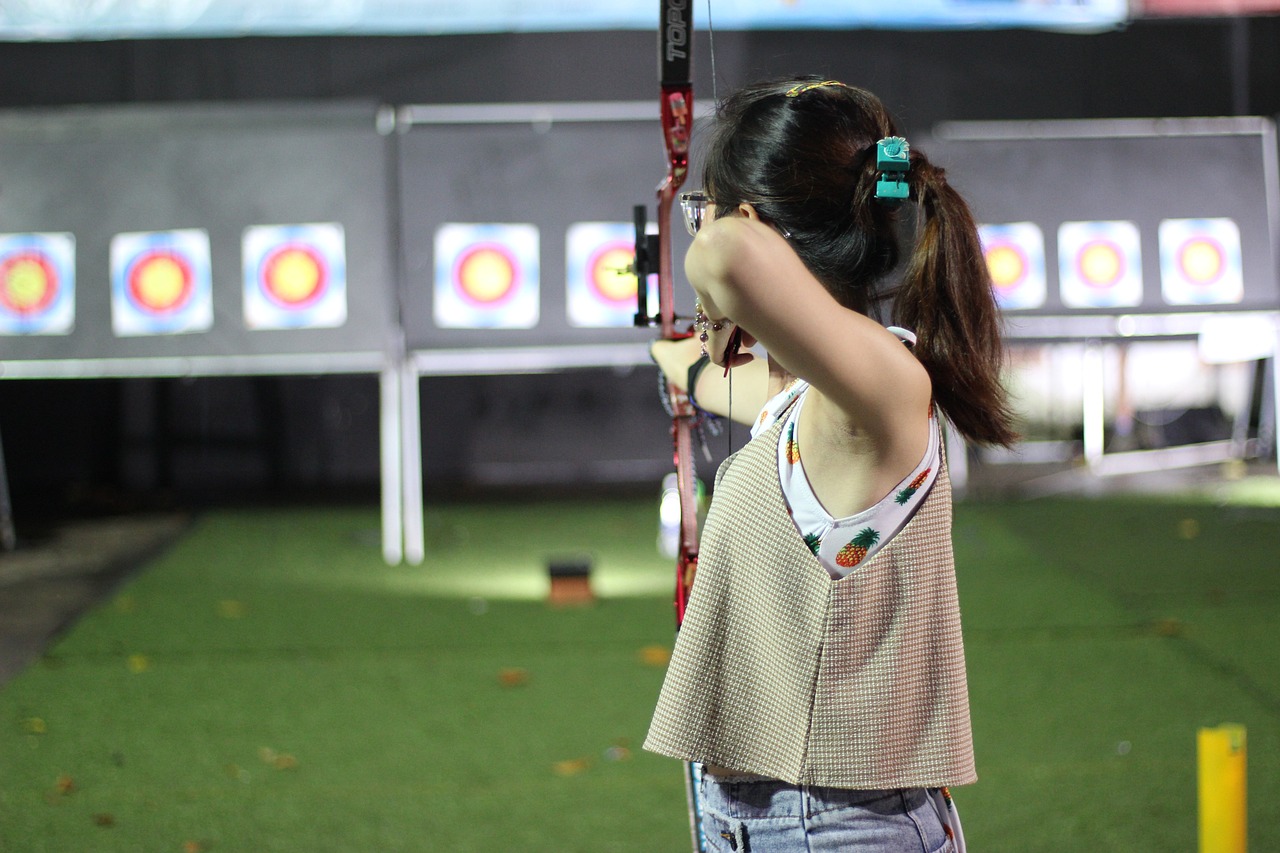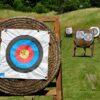Here’s some basic knowledge to get you started on the path to becoming an archer:
Safety First:
- Archery is a safe sport when proper safety procedures are followed.
- Always follow safety rules and guidelines, including wearing safety gear like an arm guard and finger tab or release aid.
Types of Bows:
- Archery offers several types of bows, including recurve, compound, longbow, and crossbow.
- Recurve bows are an excellent choice for beginners as they are relatively simple and versatile.
Understanding the Parts of a Bow:
- Learn the basic parts of a bow, including the limbs, riser, bowstring, and nocking points.
- Understand the concept of draw weight (the force required to draw the bowstring) and draw length (how far you pull back the bowstring).
Arrows:
- Arrows come in various materials, such as wood, aluminum, and carbon.
- Make sure to choose arrows that match your bow’s draw weight and length.
Shooting Stance:
- Your body’s position and posture play a crucial role in archery accuracy.
- Start with a square stance, with your feet shoulder-width apart, and your body perpendicular to the target.
Grip and Hand Placement:
- Your bow hand (non-dominant hand) should have a relaxed, open grip.
- Your drawing hand (dominant hand) should anchor near the corner of your mouth or under your chin.
Aiming and Target:
- Learn how to aim by focusing on a specific point on the target.
- Archery targets typically have a series of concentric circles, and your goal is to hit the center (bullseye).
Release and Follow-Through:
- The release of the bowstring should be smooth and controlled.
- Maintain your form and follow through after releasing the arrow.
Practice and Consistency:
- Archery is a skill-based sport that requires practice to improve accuracy.
- Consistency in your form and technique is key to becoming a proficient archer.
Safety Rules at the Range:
- If you’re practicing at an archery range, familiarize yourself with the specific safety rules and etiquette of that range.
Seek Guidance:
- Consider taking lessons from a qualified archery instructor or coach. They can provide valuable guidance on your form and technique.
Equipment Maintenance:
- Learn how to care for your bow, strings, and arrows. Regular maintenance can extend the life of your equipment.
Patience and Persistence:
- Archery can be challenging, but with patience and persistence, you can achieve greater accuracy and consistency.
Join an Archery Community:
- Joining an archery club or community can provide support, motivation, and opportunities to learn from experienced archers.
Remember that archery is a sport that requires practice and dedication to improve your skills. As you progress, you may decide to explore different styles of archery, such as target, field, 3D, or even competitive archery. Enjoy the journey, and have fun while honing your archery skills.










Add comment